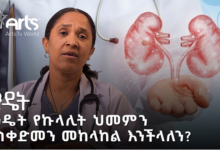Blood clotting causes and solutions
Blood clotting, also known as coagulation, is a natural and essential process that helps the body stop bleeding when an injury occurs. However, blood clots can also form inside blood vessels without injury, leading to potentially serious health complications. Here are some causes of blood clotting and potential solutions:
- Causes of Blood Clotting:
- Injury or Trauma: When blood vessels are damaged due to injury or trauma, the body initiates the clotting process to prevent excessive bleeding.
- Surgery: Surgical procedures can increase the risk of blood clots due to tissue damage and immobility during recovery.
- Medical Conditions: Certain medical conditions, such as atrial fibrillation, heart valve disorders, and inherited blood clotting disorders like Factor V Leiden mutation, can increase the risk of abnormal blood clot formation.
- Prolonged Immobility: Extended periods of immobility, such as during long flights or bed rest, can lead to blood pooling in the veins and increase the risk of clot formation.
- Obesity: Obesity is associated with inflammation and changes in blood vessel structure, which can predispose individuals to blood clot formation.
- Smoking: Smoking damages blood vessel walls and promotes inflammation, increasing the risk of blood clots.
- Oral Contraceptives and Hormone Therapy: Certain hormonal medications, such as birth control pills and hormone replacement therapy, can increase the risk of blood clot formation, particularly in individuals with other risk factors.
- Solutions for Blood Clotting:
- Medications: Anticoagulant medications, such as heparin and warfarin, can help prevent the formation of blood clots or dissolve existing clots.
- Antiplatelet Medications: Drugs like aspirin and clopidogrel can inhibit platelet aggregation and reduce the risk of blood clot formation.
- Compression Stockings: Wearing compression stockings can help prevent blood from pooling in the legs and reduce the risk of deep vein thrombosis (DVT) during prolonged periods of immobility.
- Regular Exercise: Engaging in regular physical activity can improve blood circulation and reduce the risk of blood clot formation. Activities like walking, swimming, and cycling are beneficial.
- Healthy Diet: Consuming a balanced diet rich in fruits, vegetables, whole grains, and lean proteins can help maintain overall cardiovascular health and reduce the risk of blood clots.
- Smoking Cessation: Quitting smoking can improve blood vessel health and reduce inflammation, lowering the risk of blood clot formation.
- Maintaining a Healthy Weight: Achieving and maintaining a healthy weight through diet and exercise can reduce the risk of obesity-related inflammation and blood vessel changes.
- Hydration: Staying adequately hydrated can help maintain blood viscosity and prevent excessive blood thickening, reducing the risk of blood clot formation.
- Regular Movement: Avoiding prolonged periods of immobility and taking breaks to stretch and move around, especially during long flights or extended periods of sitting, can help prevent blood clot formation.
It’s important for individuals at risk of blood clotting to work closely with healthcare professionals to develop personalized prevention and treatment strategies based on their specific medical history and risk factors. Early detection and intervention can help mitigate the potential complications associated with abnormal blood clot formation.











